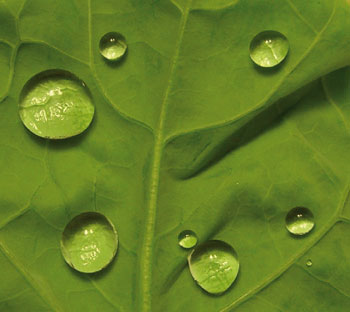| Posted: July 16, 2009 |
Superhydrophobic nanomaterial coating for clothes could reduce scalding injuries |
|
(Nanowerk News) A coating designed for clothing could help reduce industrial injuries due to scalding, say Chinese scientists ("Can superhydrophobic surfaces repel hot water?" – free access article).
|
|
Victims of hot water scalds often experience substantial burns as a result of the water wetting their clothing. 'The use of superhydrophobic textiles seems to be a promising way to protect the victims from deeper scalding,' says Yuyang Liu at The Hong Kong Polytechnic University and colleagues.
|
 |
| Water droplets on a superhydrophobic surface.
|
|
Superhydrophobic surfaces, such as Teflon and lotus leaves, exhibit high repellency to cool water. However, Liu and co-workers have discovered that a number of such surfaces show significantly reduced repellency to hot water. Their study led them to develop a fabric coated with a Teflon and carbon nanotube composite, which demonstrated promising repellency properties to hot beverages including tea and coffee.
|
|
Liu's work quantified water repellency both in terms of the shape of droplets placed on the surface (static water) and the ability of sprayed droplets (dynamic water) to slide off the surface. While a standard Teflon-coated fabric scores well with regards to static water, its response to dynamic water is poor. Liu's material aimed to rectify this by using carbon nanotubes to increase the surface roughness, which improves superhydrophobicity by trapping air bubbles in tiny pores.
|
|
'It is possible that the smaller length scale associated with the carbon nanotubes means that the superhydrophobic surface effect can withstand higher water impact pressures,' suggests Glen McHale of Nottingham Trent University, UK, who studies superhydrophobic surfaces. He warns that 'further work would be needed to repeat these tests and verify the mechanism.' Liu acknowledges that 'the creation of superhydrophobic surfaces which can repel pressured hot liquids is still a great challenge to scientists.'
|

